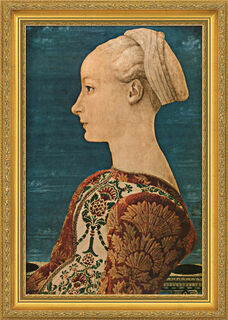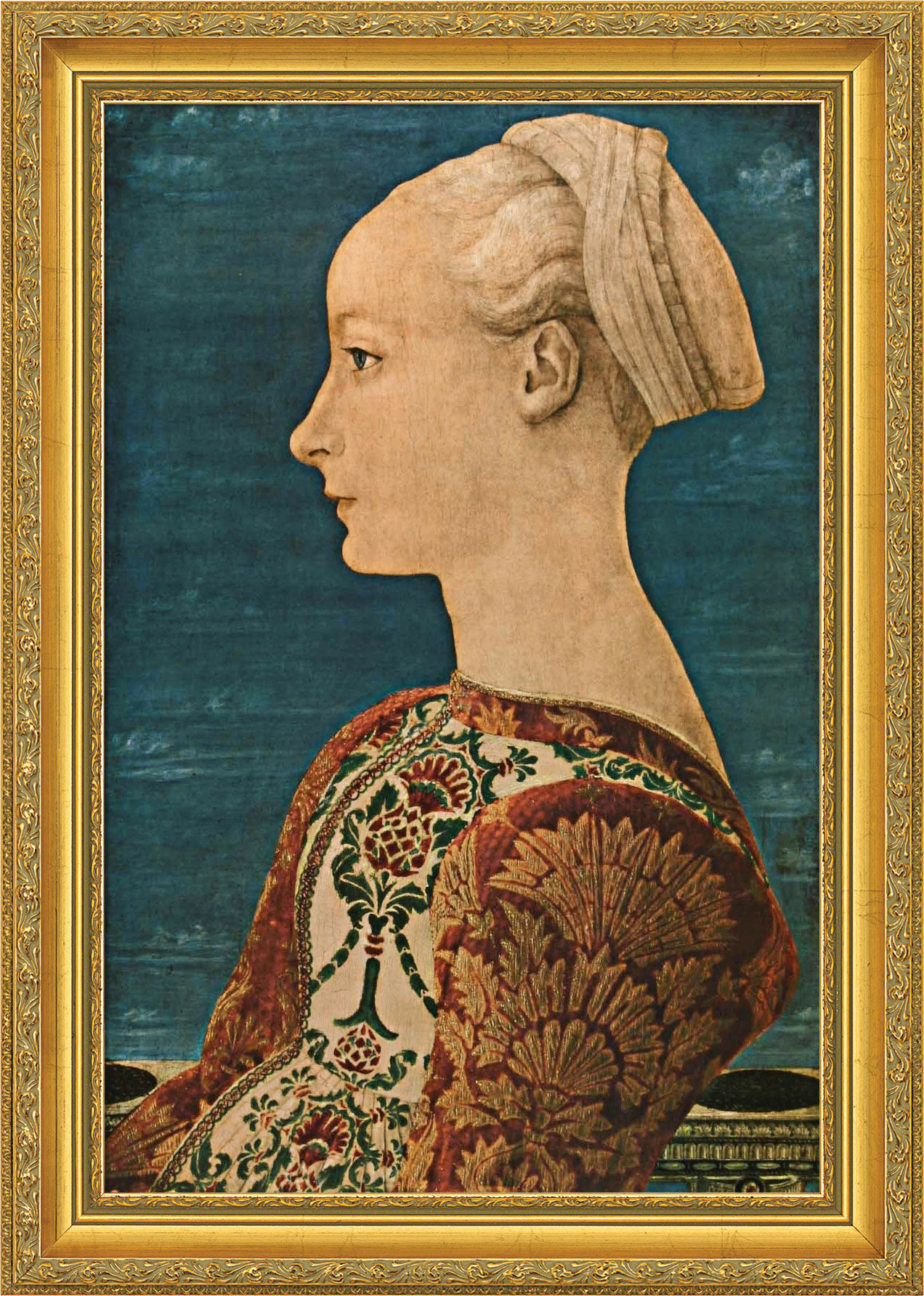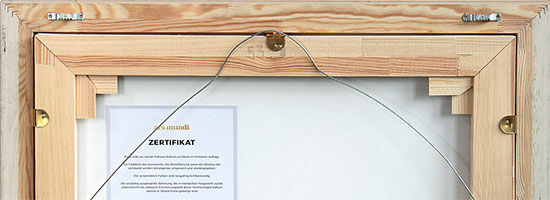Picture "Portrait of a Young Woman" (1460), framed


Picture "Portrait of a Young Woman" (1460), framed
Quick info
ars mundi Exclusive Edition | limited, 499 copies | numbered | certificate | reproduction, Giclée print on canvas | on stretcher frame | framed | size 59 x 42 cm (h/w)
Detailed description
Picture "Portrait of a Young Woman" (1460), framed
For many years, the painting was attributed to Antonio del Pollaiuolo, Piero's older brother. Piero worked in his brother Antonio's famous goldsmith's workshop but specialised in painting. His father was also a goldsmith. This environment produced a love of detail and the ability to depict this precisely.
Original: 1460, Tempera on poplar wood. Gemäldegalerie, National Museums in Berlin.
Edition transferred directly onto artist's canvas using the Fine Art Giclée process and stretched on a stretcher frame. Limited edition of 499 copies, numbered, with certificate. Framed in handmade, golden solid wood frame. Size 59 x 42 cm (h/w). ars mundi Exclusive Edition.
Customer reviews
Tolle Qualität, Rahmen passt perfekt zum Bild.
Graphic or sculpture edition that was initiated by ars mundi and is available only at ars mundi or at distribution partners licensed by ars mundi.
Giclée = derived from the French verb gicler "to squirt, spurt".
The giclée method is a digital printing process. It is a high-resolution, large-format printout on an inkjet printer with special different-coloured dye- or pigment-based inks (usually six to twelve). The colours are fade-proof, i.e. resistant to harmful UV light. They have a high richness of nuance, contrast and saturation.
The giclée process is suitable for art canvases, handmade and watercolour paper as well as for silk.
(Rebirth). The term describing art from around 1350 until the 16th century.
A mindset that developed in Florence in the late 14th century that was retrospectively classified as rebirth of the classical ideals of Greek and Roman antiquity. During the 15th and 16th centuries, the Renaissance spread first over Italy and then all over Western Europe and determined the entire artistic creation. Brilliant artists such as Donatello, Leonardo da Vinci, Michelangelo, Raphael, Dürer, Holbein, Cranach and Fouquet created their immortal works by following the humanistic premises and placing the human being in the centre of all thinking.
Renaissance experienced its heyday in literature through dramatic works and poems of William Shakespeare.
At the end of the 16th century, the Renaissance had to give way to the opulence of baroque, before its ideas experienced a rebirth in the classicism of the 18th century.






